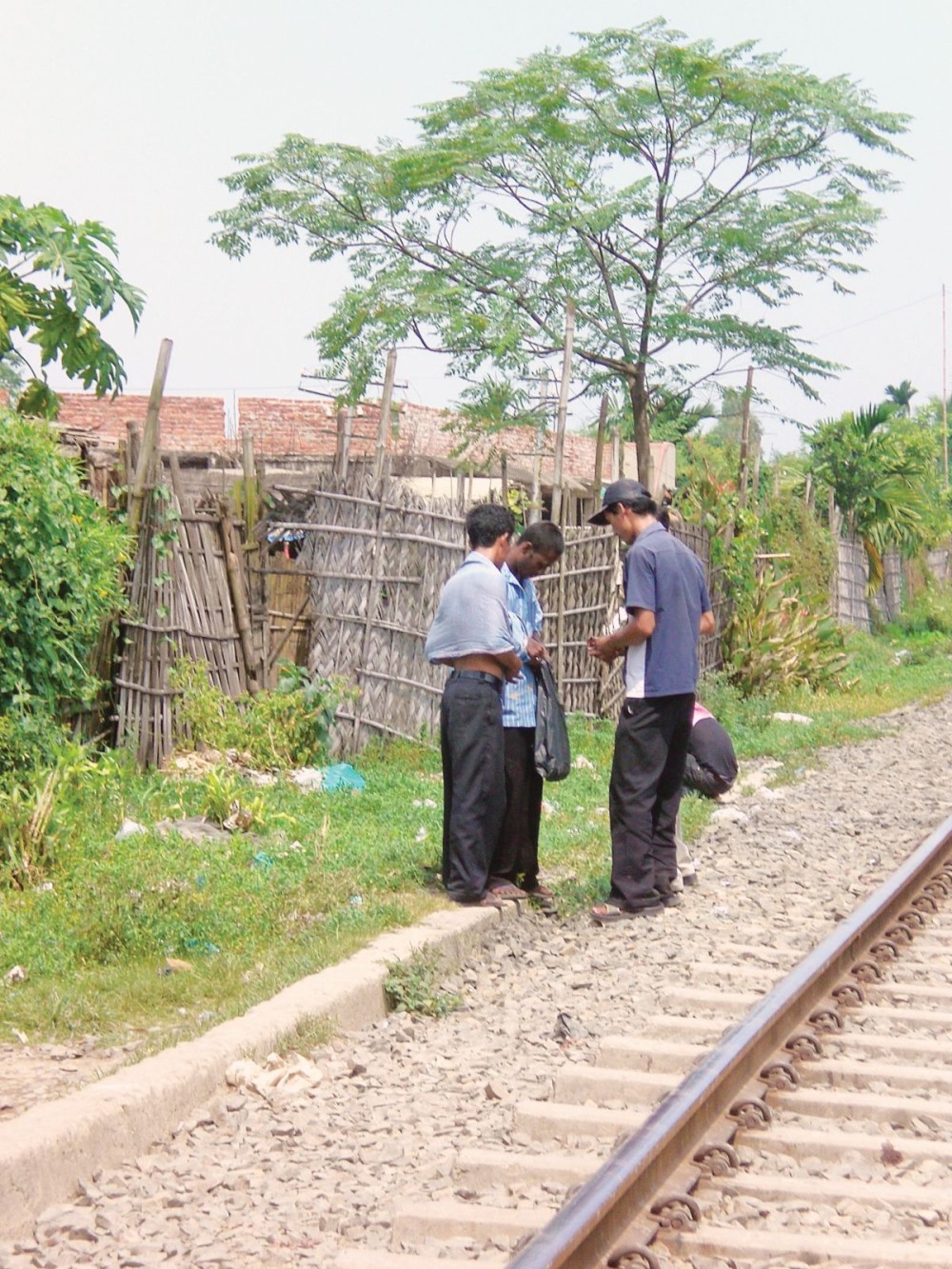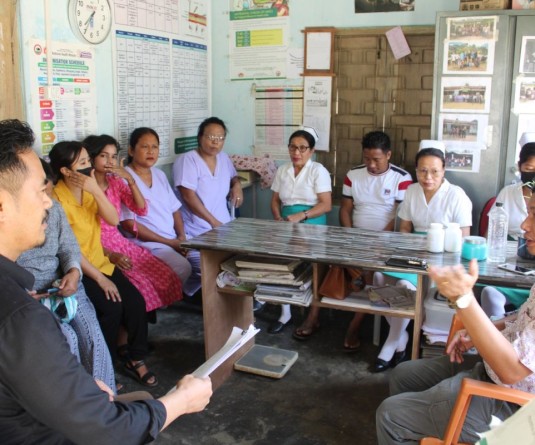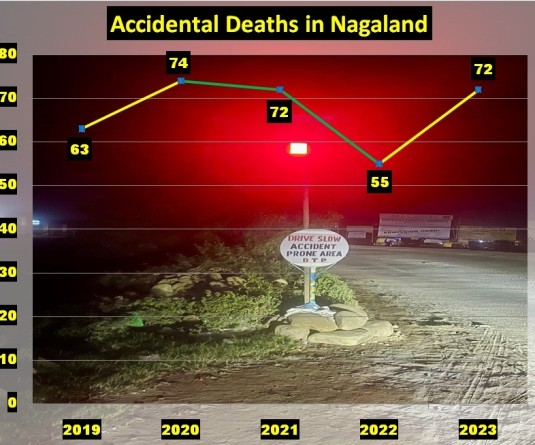A SHADY BUSINESS: Drug users and peddlers engage in selling banned drugs on September 23 at the rail tracks in Lahorijan, Karbi Anglong, Assam near Nagaland Border. (MExPix)

Longrangty Longchar
Dimapur | September 23
Drug use has been a social problem for the past many years in the Naga society. However, despite the number of measures adopted by the government and the Naga social societies, abuse of drugs is still very rampant in Nagaland.
A walk along the rail tracks in Lahorijan area bears witness to how banned drugs such as Spasmo Proxyvon (SP), Relipen and Brown Sugar etc are being sold openly.
Amidst the stink of human faeces, half-stoned non-local youths carrying black plastic bags full of the banned drugs, sell them to customers. Sari wearing women peep out of the fences around abandoned houses looking for customers.
One or two women kept vigil, while others keep watch at the gate. The business has to be done hurriedly. The “sentry” complained to her friend to do the business as fast as possible. Their voices are laced with nervousness.
After a few minutes, the women were gone. So were the other male peddlers who were selling so openly. Only the Naga youths squatted on the rail tracks; small pipes protruding out from their mouths, small aluminum and copper foils in their hands, and a match stick between their shivering fingers. They are taking brown sugar and no one sees them there getting stoned, and throwing away their lives.
It is a daily routine for most of them. A social activist working in the field of HIV/AIDS and Drugs, Neichü Angami said that according to a rampant survey conducted by the United Nations Organisations Drugs and Crime (UNODC) in Nagaland, there are about thirty to thirty five thousand drug users in Nagaland.
The common type of drugs used by the addicts are SP, Relipen, Brown Sugar, and amphetamine (a kind of Ecstasy drugs) etc.
Among the school-going children, sniffing of adhesives like ‘dendrite’ is very common, she said. Drug-use in the society is not decreasing, more and more people are getting into it, said Neichü.
The alarming point, according to the activist, is that the age of initiation into drugs among the Naga youths is becoming lesser and lesser. She said that ten years back, the age of initiation into drug abuse was about 16-17 years of age, but now, it has gone down and even children of ten to eleven years are taking to drugs out of curiosity.
Though the drug use pattern might be changing, the problem that this social evil is, remains the same.
“It is a social problem, family problem, and a spiritual problem,” said Neichü.
She opined that to prevent the youths from taking drugs, a good and comprehensive package needs to be initiated by the government and the society to check the factors that induces a person to take drugs; and for those addicts, a ‘humane approach’ and not a moral approach is needed to help them out.
Neichü opined that drug use is not just a syndrome, but something that has a bigger issue beneath it - like having problems in relationship, self esteem etc.
Whatever the case may be, drugs being sold along the rail tracks in Lahorijan is for real and unless the whole society comes together and decide to take a ‘humane approach’ instead of a ‘moral approach’, then half of more and more Naga youths are in a very grave position to take to drug abuse, and the consequences might be just what a police personnel manning the New Field Check Gate warned: “If the trend goes on, then half of the Naga youths will be extinct within the next ten years.”



.jpg)


